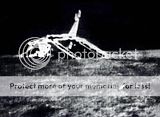M
MeteorWayne
Guest
I think this belongs in another thread, but till I find it...
June 3, 2010: A Soviet robot lost on the dusty plains of the Moon for the past 40 years has been found again, and it is returning surprisingly strong laser pulses to Earth.
"We shined a laser on Lunokhod 1's position, and we were stunned by the power of the reflection," says Tom Murphy of UC San Diego, who leads the research team that's putting the old robot back to work. "Lunokhod 1 is talking to us loudly and clearly."
Almost forgotten in the lore of the Apollo-era space race, Lunokhod 1 was one of the greatest successes of the old Soviet lunar exploration program. In 1970, Time magazine described the robot's historic landing:
"Three hours after reaching the Moon aboard the latest unmanned Russian Moon probe, Luna 17, Lunokhod I (literally "moonwalker") lumbered down one of two ramps extended by the mother ship and moved forward … thus taking the first giant step for robotkind on another celestial body."
The remote-controlled rover traveled almost 7 miles during its 11 month lunar tour, relaying thousands of TV images and hundreds of high-resolution panoramas of the Moon back to Earth. It also sampled and analyzed lunar soil at 500 locations.
Then Lunokhod-1 was lost – until last month when NASA's Lunar Reconnaissance Orbiter found it again. The recovery is described in an earlier NASA press release....
The APOLLO (Apache Point Observatory Lunar Laser-ranging Operation) Project:
http://www.physics.ucsd.edu/~tmurphy/apollo/apollo.html
June 3, 2010: A Soviet robot lost on the dusty plains of the Moon for the past 40 years has been found again, and it is returning surprisingly strong laser pulses to Earth.
"We shined a laser on Lunokhod 1's position, and we were stunned by the power of the reflection," says Tom Murphy of UC San Diego, who leads the research team that's putting the old robot back to work. "Lunokhod 1 is talking to us loudly and clearly."
Almost forgotten in the lore of the Apollo-era space race, Lunokhod 1 was one of the greatest successes of the old Soviet lunar exploration program. In 1970, Time magazine described the robot's historic landing:
"Three hours after reaching the Moon aboard the latest unmanned Russian Moon probe, Luna 17, Lunokhod I (literally "moonwalker") lumbered down one of two ramps extended by the mother ship and moved forward … thus taking the first giant step for robotkind on another celestial body."
The remote-controlled rover traveled almost 7 miles during its 11 month lunar tour, relaying thousands of TV images and hundreds of high-resolution panoramas of the Moon back to Earth. It also sampled and analyzed lunar soil at 500 locations.
Then Lunokhod-1 was lost – until last month when NASA's Lunar Reconnaissance Orbiter found it again. The recovery is described in an earlier NASA press release....
The APOLLO (Apache Point Observatory Lunar Laser-ranging Operation) Project:
http://www.physics.ucsd.edu/~tmurphy/apollo/apollo.html











